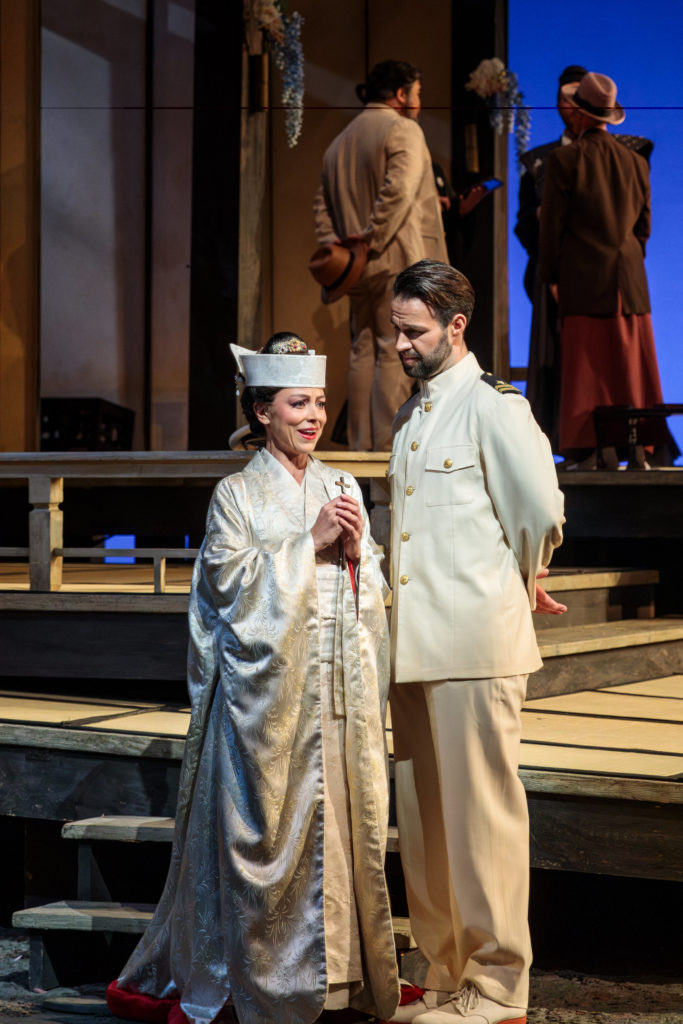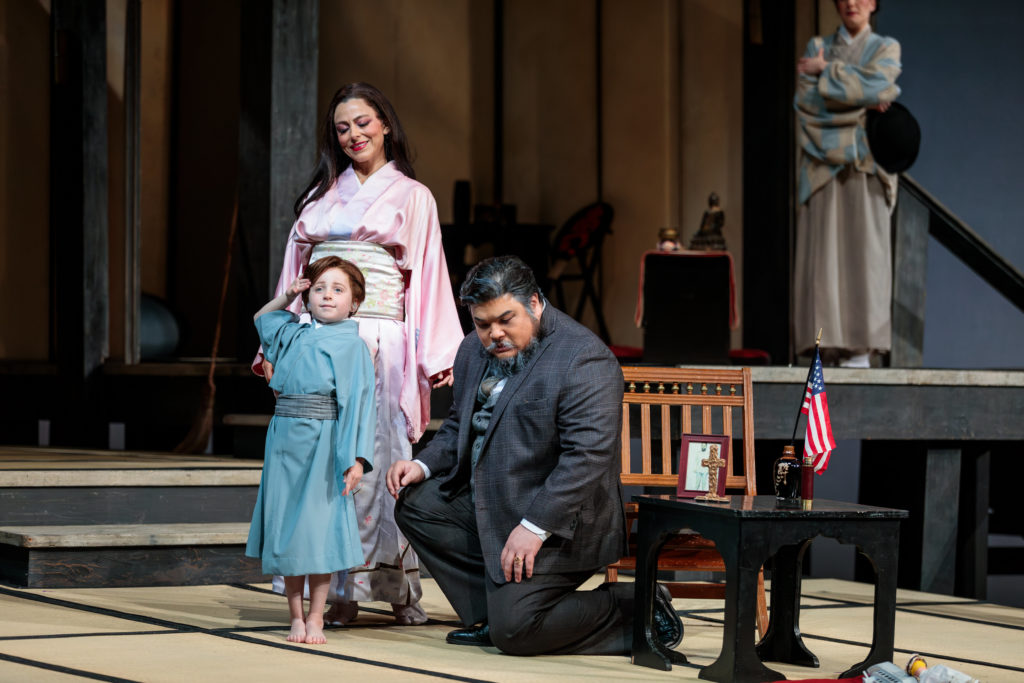San Diego Opera’s Stellar ‘Madama Butterfly’ Rejuvenates a Familiar Puccini Gem
San Diego Opera opened a resplendent production of Puccini’s Madama Butterfly Friday at San Diego Civic Theatre. Featuring one of the finest casts the company has assembled in some time and adroitly directed by Jose Maria Condemi in his local debut, the production exhibited an unexpected urgency that heightened the audience’s emotional involvement in this familiar tragedy.
As one of the most performed operas in the repertory, is there anyone who does not know the outcome of this ill-fated love story? And the strength of Puccini’s score alone can drive home the opera’s tragic denouement in even the most casual production. Yet the San Diego production’s astonishing attention to every dramatic and musical detail, to every hint of foreshadowing, to every nuance of character development revealed the composer’s genius. It was Puccini who seized upon every opportunity to transform the tawdry culture-clash melodrama of playwright David Belasco into the profound tragedy we have come to know. And San Diego Opera brought all of that center stage Friday at Civic Theatre.Soprano Corrine Winters gave San Diego Opera a vocally brilliant Violetta in the company’s 2017 La traviata, succeeding in spite of that Verdi production’s lame Roaring Twenties/Art Deco premise. In this production, Winters’ voice easily encompassed both the luxurious spinto character of Cio-Cio-San’s familiar aria “Un bel di” as well as a bracing dramatic edge aptly employed to rebuke her maid Suzuki and to mock her would-be suitor Prince Yamadori. In his local debut, Adam Smith’s commanding tenor displayed that rich Italianate color Puccini demands for his dashing Lieutenant Pinkerton, the American naval officer who believes taking a young Japanese geisha as a temporary bride while his ship is in Nagasaki is simply a privilege of his country’s bullying presence as it forced Japan into commercial and military agreements in the mid-19th century. Smith created a compelling, seamless dramatic arc from the bravado of his first meeting with his Japanese geisha, to authentic ardor as they consummate their marriage, to intense remorse when he returns to Nagasaki three years later to face the tragedy he has brought on Cio-Cio-San.
With comforting tonal warmth, the rising Korean baritone Kidon Choi imbued his American consul Sharpless with the requisite solicitude that Puccini demands from his character to balance Pinkerton’s swagger, which the composer underlines with quick flashes of “The Star-Spangled Banner” whenever Pinkerton’s behavior crosses the red line. Mezzo-soprano Stephanie Doche’s compassionate Suzuki provided ample vocal to allure to a character who rarely leaves Cio-Cio-San’s presence onstage.Among the comprimario singers, Joel Sorenson, a veteran San Diego Opera singer, gave the marriage broker Goro an irrepressible yet humorous presence with his bright, nimble tenor, and baritone Søren Pedersen’s aptly expressed Prince Yamadori’s pompous self-importance. As the Bonze, DeAndre Simmons burst on the scene with his gruff but sonorous bass to express the wrath of Cio-Cio-San’s family at her covert conversion to Christianity to win the hand of a despised foreigner. As the Imperial Commissioner and the Official Registrar, baritones Andrew Konopak and James Schindler carried out their tasks with apt dignity. Five-year-old Addison Smyres ably played Cio-Cio-San’s young son Trouble.
San Diego Opera Principal Conductor Yves Abel again proved his remarkable ability to coax a sumptuous Romantic sonority from the members of the San Diego Symphony in the pit while he provides the singers onstage with unfailing support and inspiration. Chorus Master Bruce Stasyna’s singers are given a modest role in this opera, although their account of the famous humming chorus at the close of the second act worked its magic.
As I indicated in the opening of this review, Jose Maria Condemi’s astute, adroitly detailed stage direction brilliantly refreshed an overly familiar opera. I hope General Director David Bennett will bring him back to do more work with the company.
The simple unit set from Los Angeles Opera with its steeply raked design, the work of John Gunter, had the advantage of raising the singers up off the Civic Theatre stage floor, which I believe helped project their voices into the vast, 3,000-seat hall. Alice Bristow’s brightly-hued period costumes compensated for the monochromatic set.
This production by San Diego Opera opened on April 26, 2024, at San Diego Civic Theatre in downtown San Diego, and will be repeated there on April 28.

Ken Herman, a classically trained pianist and organist, has covered music for the San Diego Union, the Los Angeles Times’ San Diego Edition, and for sandiego.com. He has won numerous awards, including first place for Live Performance and Opera Reviews in the 2017, the 2018, and the 2019 Excellence in Journalism Awards competition held by the San Diego Press Club. A Chicago native, he came to San Diego to pursue a graduate degree and stayed.Read more…


